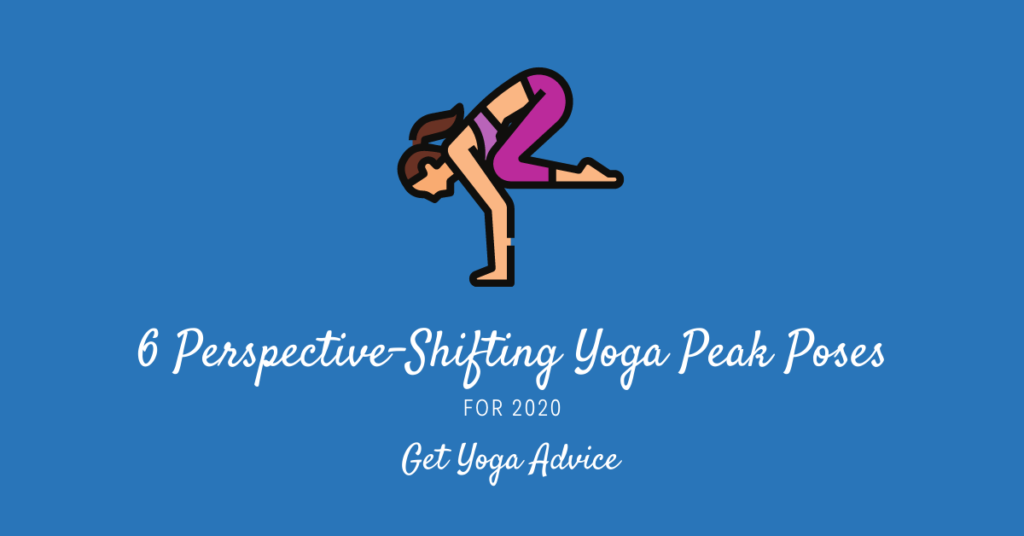This has been a challenging year for everyone around the world. The impact of a pandemic affected each of us in different ways. The toll on our mental and physical health is impossible to ignore.
With so much out of our control, the best we can do is shift our perspective and take hold of the aspects of our life that we can control.
Physical exercise in the form of yoga has benefited the human race for over 5000 years. The practice of yoga calms the mind and relaxes the body. What surprises many who are just starting out is the improved strength of not just your muscles, but of your mind.
Challenging the mind will ultimately improve your mental health and give you renewed and refreshed perspective.
As you advance in your yoga practice, you can begin to try poses that are more demanding of your strength and balance. Known as peak poses, these postures may find you in an inverted position.
Fear not! With proper yoga sequencing, you will perform poses that warm up your body and mind and prepare you for one of many perspective-shifting yoga peak poses.
Contents [hide]
Yoga Sequence
Peak poses are more demanding on our bodies. A well-practiced yogi will move in and out of some of the most challenging peak poses with ease and grace.
While practice makes perfect warming up is essential for any practice and by performing a sequence of poses you will help to prepare your mind and body for a more challenging posture, like a peak pose.
A yoga sequence will include warm up postures and focusing postures. The goal is to eliminate any tension in the body.
Without a proper warm up or sequence, you risk serious injury and frustration. Performing a yoga sequence also improves your chance at successfully moving in and out of a challenging peak pose.
Peak Poses
1. Wheel Pose
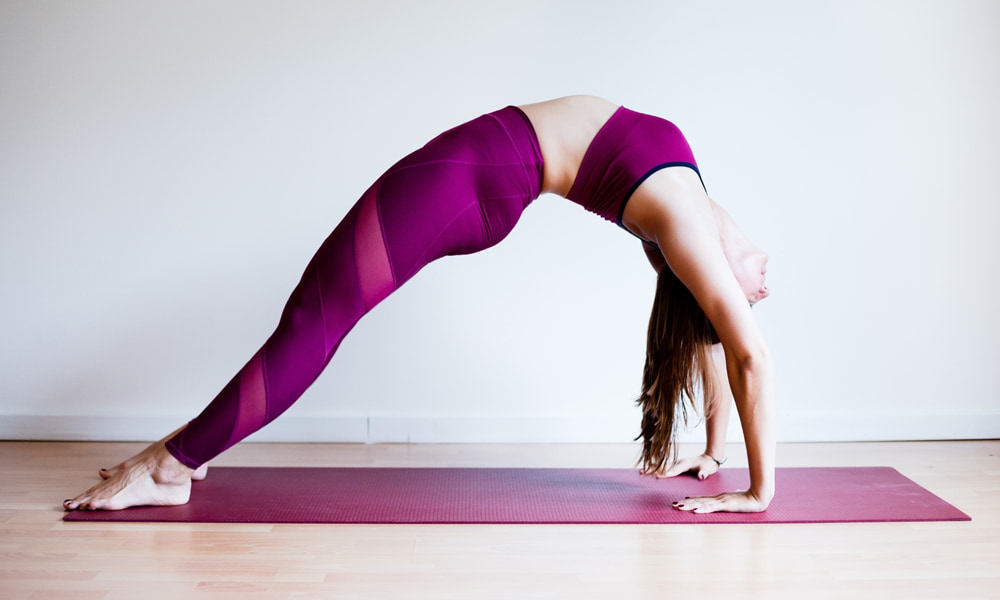
This pose, which is also known as Upward Bow Pose, promises to boost your energy. It activates the muscles of your arms, abdomen, and legs, all while strengthening your spine.
A successful Wheel Pose will stimulate the thyroid and pituitary gland. Perspective shift? Absolutely. In this pose, your head will hang upside down. Let’s look at how to perform Wheel Pose.
- Start by lying flat on the floor.
- Bend your knees and pull your heels as close to your bottom as possible as you keep your feet flat on the floor.
- Stretch your arms up and then end your elbows so that your forearms are perpendicular to the floor.
- Spread your fingers and place your palms on the floor beside your head with your fingers pointing toward your shoulders.
- Lift your hips and bottom off the floor keeping your thighs parallel.
- Remember to inhale and exhale.
- After three breaths, firmly press your hands in the floor and lift onto the crown of your head.
- Inhale and exhale deeply.
- Press your hands into the floor, lift your head and straighten your arms.
- Allow your head to hang as you hold this position for 5 to 10 seconds.
- Repeat 3 to 5 times.
2. Downward Facing Dog
This is one of the most common yoga postures and is always practiced as part of a yoga sequence, most often a Sun Salutation.
Performing Downward Facing Dog changes your perspective, but it also provides a full body stretch, rejuvenating the mind and body. The inversion of your head calms the brain to help relieve stress and mild depression.
- Begin this pose on your hands and knees.
- Your hands should be below your shoulders, and your knees below your hips.
- Spread your palms wide and curl your toes under your feet.
- Press firmly into the floor with your hands and lift your knees up.
- Keep a bend in your knee and allow your heels to remain off the floor.
- On your next exhale, straighten your legs without locking your knees and push your heels towards the floor.
- With firm arms, widen your shoulder blades and draw them toward your tailbone.
- Do not allow your head to hang. Instead, keep it positioned between your upper arms.
- Stay in this position for as long as you feel comfortable, up to three minutes.
3. Standing Forward Bend
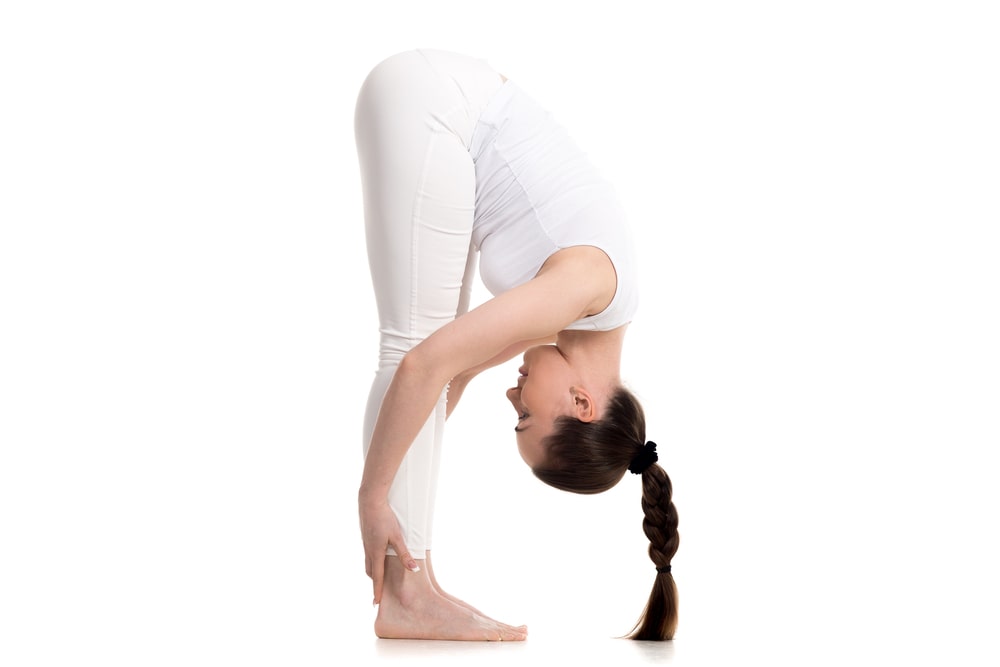
There are a number of Forward Bend postures. Each one helps to focus your attention inward. Forward folds or bends help to calm the mind and soothe the nerves. With your head below your heart, the increased blood flow will leave you feeling rejuvenated. Let’s focus on Standing Forward Bend.
- Begin by standing in Mountain Pose.
- Stand with your big toes touching and your heels slightly apart.
- Place your hands on your hips and bend forward from your hips, and not your waist.
- Keep your knees straight as you reach for the floor.
- Place your fingertips or palms on the floor, or if you are able, grab the back of your ankles.
- Press your heels into the floor as you lift your sit bones towards the sky.
- Stay in this posture for 30 seconds to 1 minute.
4. Dancer’s Pose
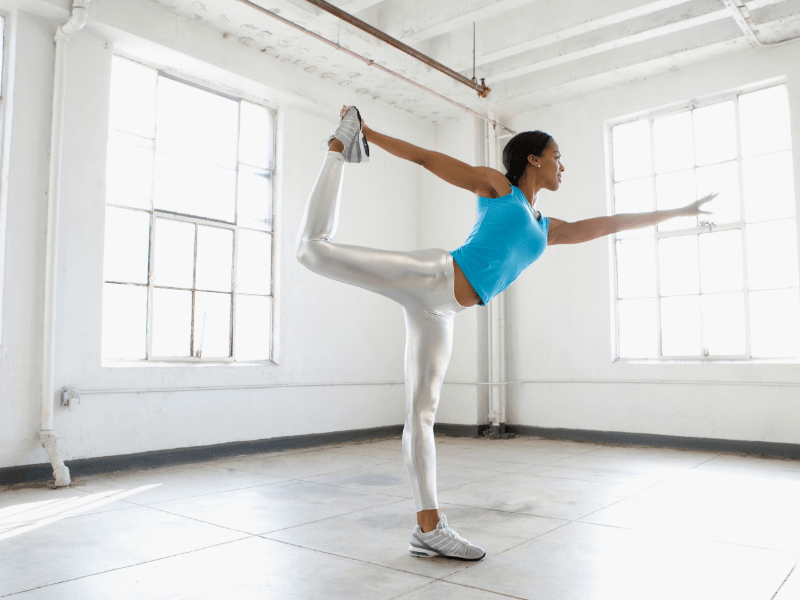
One of the most beautiful poses in our opinion is Dancer’s Pose. This yoga posture improves balance and body awareness. More importantly, it can help build confidence and empowerment. How better to shift your perspective than with improved confidence?
Dancer’s Pose is demanding of the body and mind. If you fall out of it, do not get discouraged. Just try again. Each practice of this pose will give you strength required to hold it longer and longer each time.
- Begin in Mountain Pose.
- Press firmly with your big toes and lift the inner arches of our feet.
- Lengthen your spine as you soften your ribs.
- Bend the right knee and reach back with your right hand.
- Grasp your ankle from the inside out so that your fingertips point to the right.
- With your left leg strong and firm, begin to press the right thigh back and up as you press into the right big toe.
- At the same time, reach your left arm forward and up.
- Lift the chest as you continued to extend your right leg.
- Hold this posture for 5 to 10 seconds and release back into Mountain Pose.
- Repeat on the other side.
5. Handstand
One of the more intimidating poses is Handstand. This yoga posture requires considerable strength and balance, as well as a focused mind. With the use of a wall, the natural fear of falling will be eliminated when performing this inverted posture.
Handstand will strengthen your shoulders, arms, and wrists all while calming the mind.
- Begin this posture by moving into Downward Facing Dog with your fingertips about an inch away from the wall.
- Rotate your upper arms outward and spread your palms wide.
- Bend your right knee and step closer to the wall.
- Take a few practice hops with your right leg, sweeping your left leg up towards the wall.
- Engage your core as you practice the hop several times.
- When you are ready, kick both legs up to the wall.
- Don’t be discouraged if your heels hit the wall with force, sending your legs back down. With practice, you will find you are able to kick your heels lightly against the wall.
- Stay in this pose for 10-15 seconds.
- Eventually, and with continued practice, try to stay in this position for 1 minutes.
6. Crow Pose
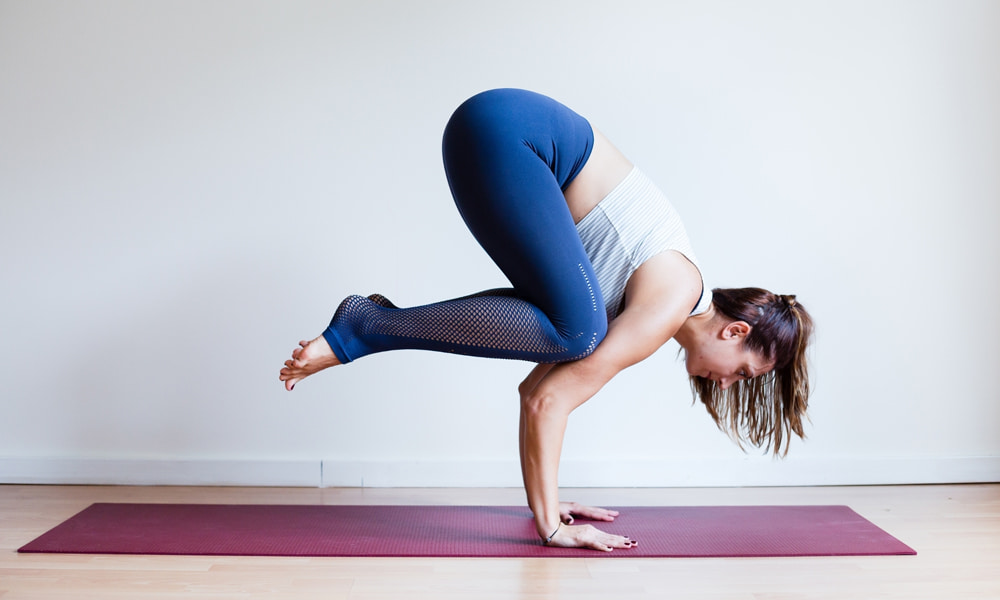
This pose might look easy, but it is quite demanding of your strength and patience. This is not to say that a beginner yogi is incapable of performing Crow.
Accomplishing this yoga posture will boost your confidence as well as improve your focus. Ridding your mind of distraction is part of the training required to move into Crow Pose.
- Begin in a squat position with your feet together and your knees apart.
- Tilt your torso forward so that your shoulders are in between your knees.
- Gently squeeze your knees against your shoulders as you place our palms together in front of your sternum.
- Extend your tailbone down toward the floor.
- Place your hands firmly on the floor below your shoulders and about 8 inches in front of your feet.
- Raise onto your toes, gently shifting your weight forward.
- Reach your chest forward as you lift your heels towards your bottom.
- Allow your knees to rest on your triceps or gently grip your shoulders as you press your arms firm and straight.
- Hold this posture for 5 breaths and release back down to the mat or floor.
Finding Guidance on Peak Poses
If you are looking for a class or series that provides yoga sequences and peak poses, start by looking for a Vinyasa Flow class. This approach to yoga moves from one pose directly into the next, building strength and focus.
Vinyasa flow can be very challenging and vigorous and you are almost always guaranteed to break a sweat. It is a more contemporary form of yoga. Each class will be slightly different depending on the instructor or class sequence.
One approach to yoga that continues to gain in popularity at the moment is Hot Yoga. This form of yoga is performed in a hot and humid studio which causes considerable sweating. The warm temperatures provide increased flexibility as you move from posture to posture.
Many find it improves yoga skills by accomplishing a difficult pose, particularly a peak pose, in a hot setting. Be careful though! With increased heat comes increased perspiration. Remember to hydrate before, during, and after your hot yoga practice.
How do Peak Poses Shift Perspective?
The demands of Peak Postures challenge our body and more importantly our minds. A posture like Handstand, or Dancer’s Pose for example, require centered focus to achieve stability and balance.
By eliminating the day to day distractions that enter our mind, you can’t help but shift perspective. Increased blood flow sends oxygen to the muscles that need it the most, releasing tension and frustration. By redirecting perspective, we can improve our mood and reduce our stress and anxiety.
Final Word on Perspective-Shifting Yoga Peak Poses
Perspective is everything. We know this to be true. When you’re having a bad day or week, or you’re struggling with work, your perspective is clouded with negativity and doubt.
This is a heavy burden to carry and for some, the thought of emerging from this negative space feels impossible.
Daily yoga practice, or even weekly, can help alter your mood by improving your circulation and strengthening your muscles. Yoga promises to improve your posture and for some, the simple act of lengthening your spine can instantly improve your mood.
This year has been like no other, challenging everyone’s mental and physical health. We know we can’t control everything, but we do have control over our perspective. Peak Poses as part of your yoga practice can help shift your perspective – figuratively and literally.
The physical act of inverting your head is guaranteed to shift your perspective. Successfully moving into and out of peak poses will give you a sense of accomplishment and pride that will undoubtedly change your outlook for the remainder of the day.
When you’re in need of a perspective shift, look for a Vinyasa flow that will provide you with proper yoga sequences to help you accomplish some of our favorite peak poses.
If you are concerned about your mental health, don’t be afraid to ask for help from friends, family, or a medical professional. Take a look at reputable source like Mental Health for signs that you might be suffering from a mental illness.

